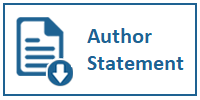Communication Strategy in Socialization of Trafficking Human Removal Policies in Lhokseumawe City
DOI:
https://doi.org/10.31937/ultimacomm.v12i1.1481Abstract
Human trafficking is one of the strategic issues in efforts to empower women, which is a serious concern of the government both at the central level as well as provincial and district/city governments in Indonesia. This study intends to find out the communication strategy carried out in the dissemination of policies on the elimination of human trafficking in the Lhokseumawe District, which consists of communicator strategies, message and audience strategies, and media strategies. The research method used in this research is a qualitative method with a case study approach. Lhokseumawe District Government Officials, selected purposively are the subjects in this study, while the object of the research is the communication strategy in the socialization of the policy of eliminating human trafficking. Data were collected by conducting in-depth interviews, participatory observation, and literature studies. The results showed that five considerations became the basis for the preparation of the communication strategy. Based on these five considerations, a communication strategy was compiled, which consisted of a communicator strategy, a message and audience strategy, and a media strategy. Communicators in the socialization are the Anti Human Trafficking Task Force, which consists of various elements that work in accordance with the field under their control and the type of information delivered. The information conveyed in the form of eight message topics arranged in the form of exposure and interesting language, tailored to the ability of acceptance of each target group.
Keywords: Communication Strategy; Policy Socialization; Human Trafficking; Lhokseumawe
Downloads
Downloads
Published
How to Cite
Issue
Section
License
Ultimacomm Jurnal Ilmu Komunikasi allows readers to read, download, copy, distribute, print, search, or link to its articles' full texts and allows readers to use them for any other lawful purpose. The journal allows the author(s) to hold the copyright without restrictions. Finally, the journal allows the author(s) to retain publishing rights without restrictions
1. Authors are allowed to archive their submitted article in an open access repository
2. Authors are allowed to archive the final published article in an open access repository with an acknowledgment of its initial publication in this journal















